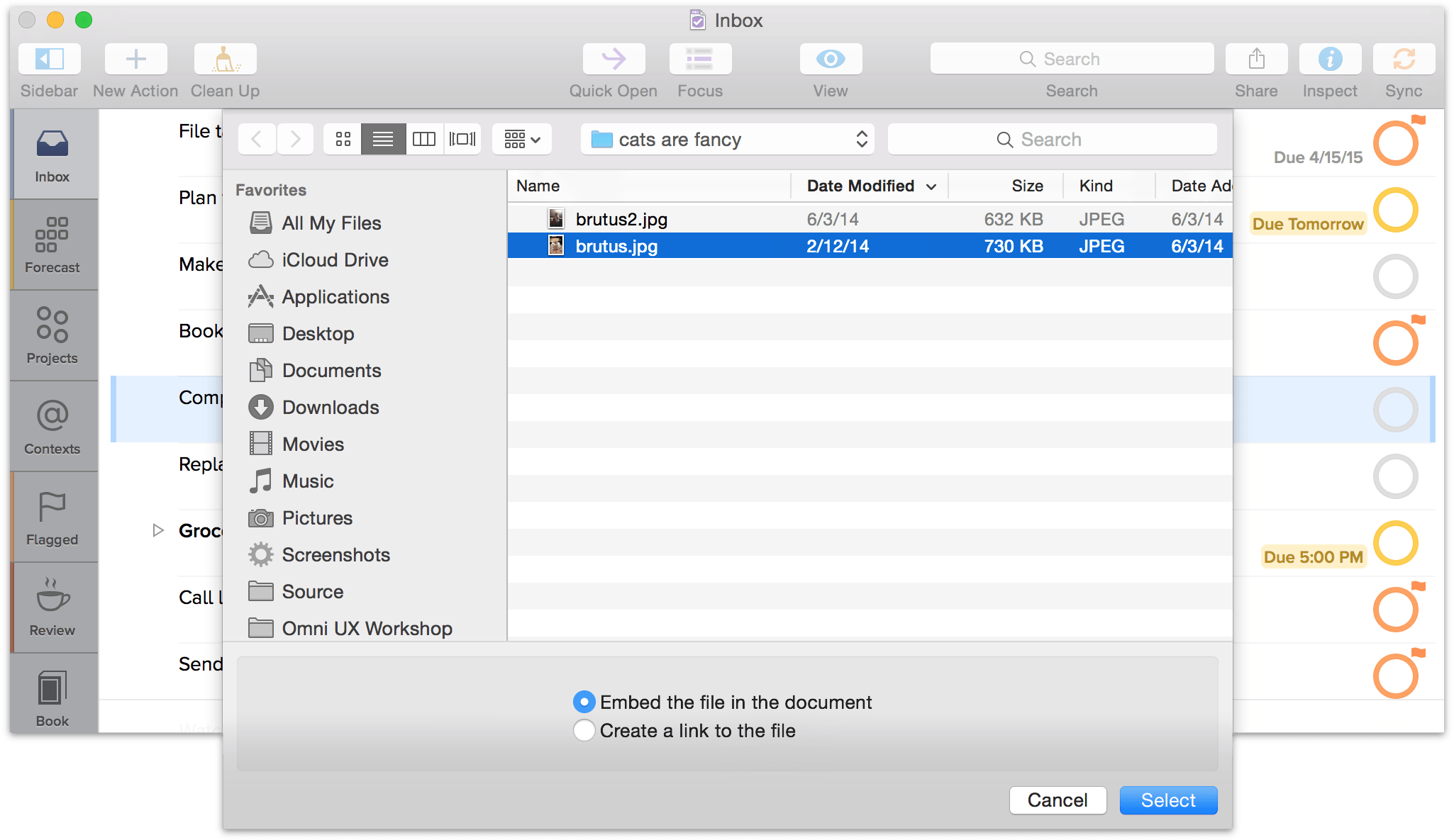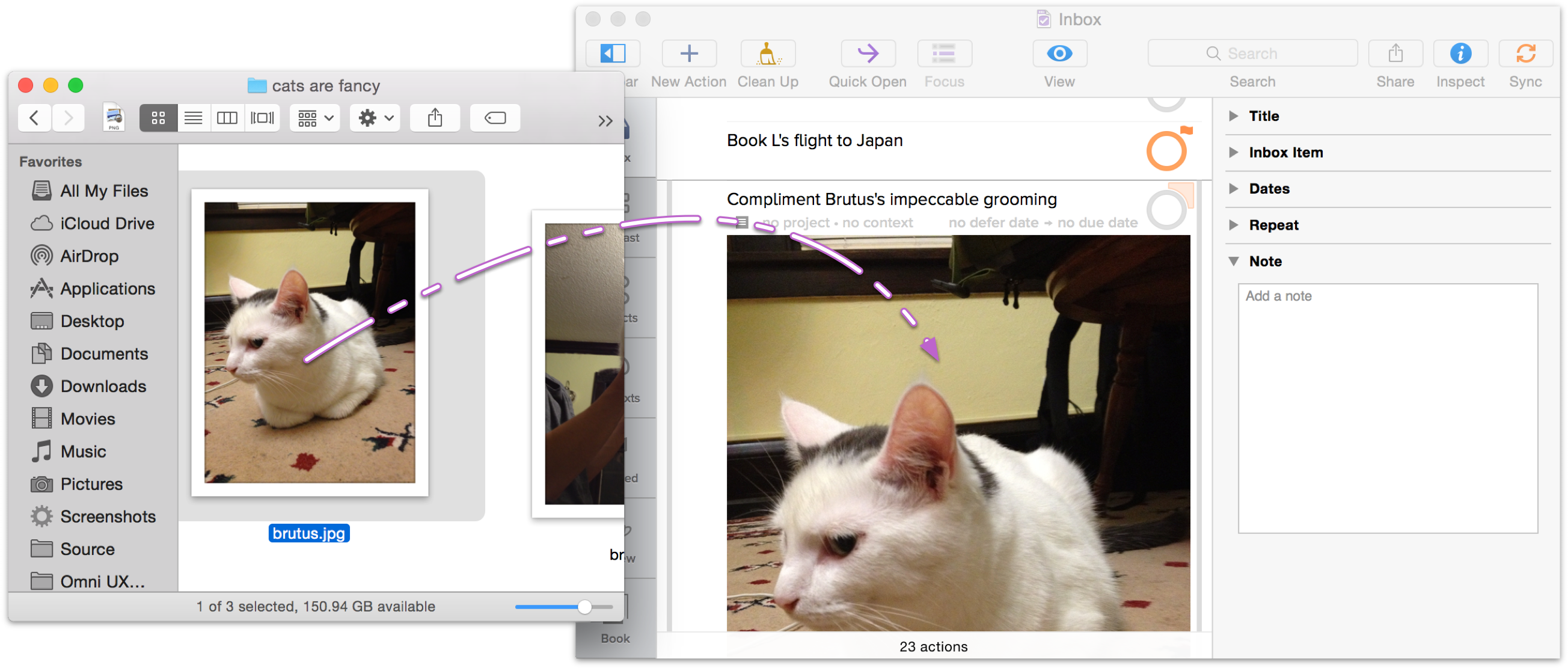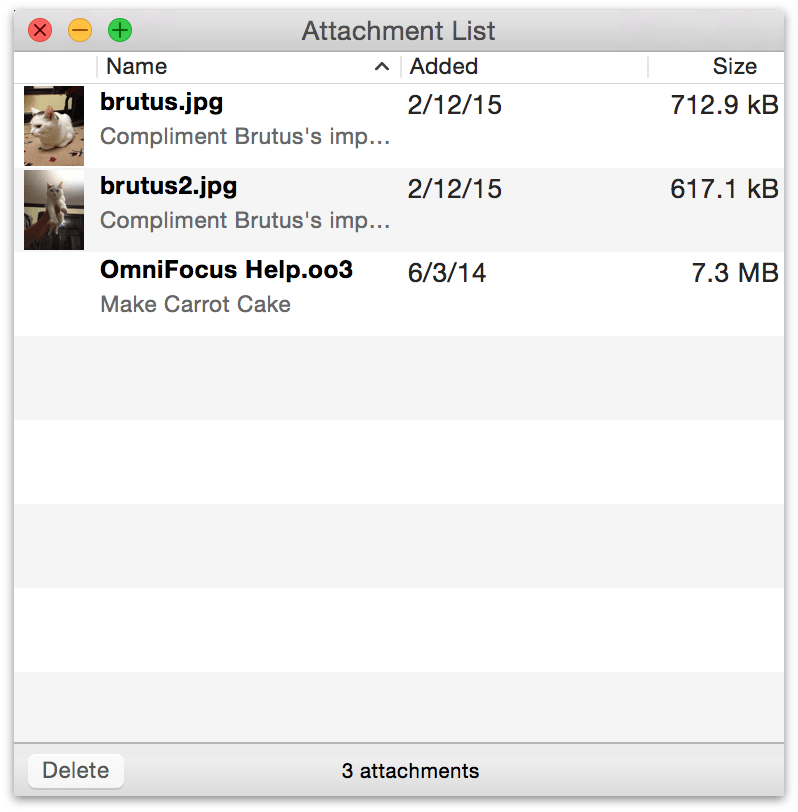Notes and Attachments
Notes are a great way to enrich the actions and projects you’re working on. Instead of cluttering an action title with a list of instructions for completing it, try adding them in the note field instead—note text is fully searchable, so there’s no worry about the minutiae getting lost in a hidden field.
To add a note to an item, click the note icon in the main outline near the item’s title, edit the note field in the inspector, or use the Command-’ keyboard shortcut.
When a picture is worth a thousand words, try adding an attachment! With an action or project selected, choose Edit ▸ Attach File. This opens a file selection dialog, where you can browse to find the file you’d like to attach. You can choose whether to link to the file on your system, or embed it into your database (the Embed option is chosen by default). Note that if you want access to the file on your other devices you’ll want to embed it so it can sync properly (see Creating and Syncing Attachments, next).
Creating and Syncing Attachments
When adding attachments in OmniFocus for Mac, there are two ways to ensure the attachments make it across to your iPad or iPhone (or your other Macs with OmniFocus installed). The important theme here is to embed the attachments, as simply linking to them won’t work. Due to the file formats supported on iOS, not all attachments added in OmniFocus for Mac are visible in OmniFocus for iPad or iPhone.
Note
The reason why linking to attached files won’t work is because filesystem links on OS X are just that—they are links to files on that system. When you sync OmniFocus for Mac, those filesystem links no longer work because iOS filesystems are different from the one on your Mac.
However, when you embed an attachment and sync OmniFocus, that file is copied into your OmniFocus database and is stored on the sync server where it can easily be pulled down on either platform.
Option 1: Attaching Files from the Edit Menu
With OmniFocus open on your Mac, select the item to which you’d like to attach something, and then select Edit ▸ Attach File in the menu bar. In the Open sheet that slides down, select the file you would like to attach, and then make sure you select the Embed the file in the document radio button before you click Select.

Note
The Embed the file in the document option is selected by default. This makes syncing your attachments the default state of affairs; if you’d prefer not to sync an attachment (for bandwidth or database efficiency reasons), choose Create a link to the file instead.
Option 2: Attaching Files from the Finder
To attach a file from the Finder (it’s the blue smiley-faced icon on the far left edge of the Dock on your Mac) you will need to Option-drag the file from the Finder to the note field of your item in OmniFocus. Make sure the note field is open and selected, then place the Finder window next to the OmniFocus window and select the file you want to attach by clicking on it. Hold down the Option key while pressing the mouse button. You’ll notice that when you press the Option key, the mouse pointer changes to a green circle with a plus sign inside. This is exactly what you want! Now drag that file onto your OmniFocus item, let go of the mouse button, and the file is attached.

After you have attached the file in OmniFocus on your Mac, be sure to click Sync in the toolbar. Then, when you switch to OmniFocus for iPad or iPhone, tap Sync to bring the attachments over to your other device.
Note
Your Mac supports all kinds of different file types, mainly because of the wide variety of apps that can run on OS X. Conversely, iOS doesn’t support nearly as many file types by default. The rule of thumb to keep in mind is that in most cases, if you have compatible versions of an app on your Mac and iPad, you should be able to open those attachments in OmniFocus on either platform.
The Attachment List
The Attachment List (Window ▸ Attachment List) gives you quick access to all of the files attached to your database. This can be handy for finding the little pieces of reference material you have added to your actions and projects.

The Attachment List displays a list of all of your attachments, the item that they are attached to, the file size, and the date they were added. To reveal an attachment in your OmniFocus database, double-click it in the Attachment List.
Tip
The Attachment List is also useful for clearing out old attachments, thus slimming your database and making it faster to sync.
To delete an attachment that you don’t need anymore, select it in the list and then click the Delete button in the window’s lower-left corner.
